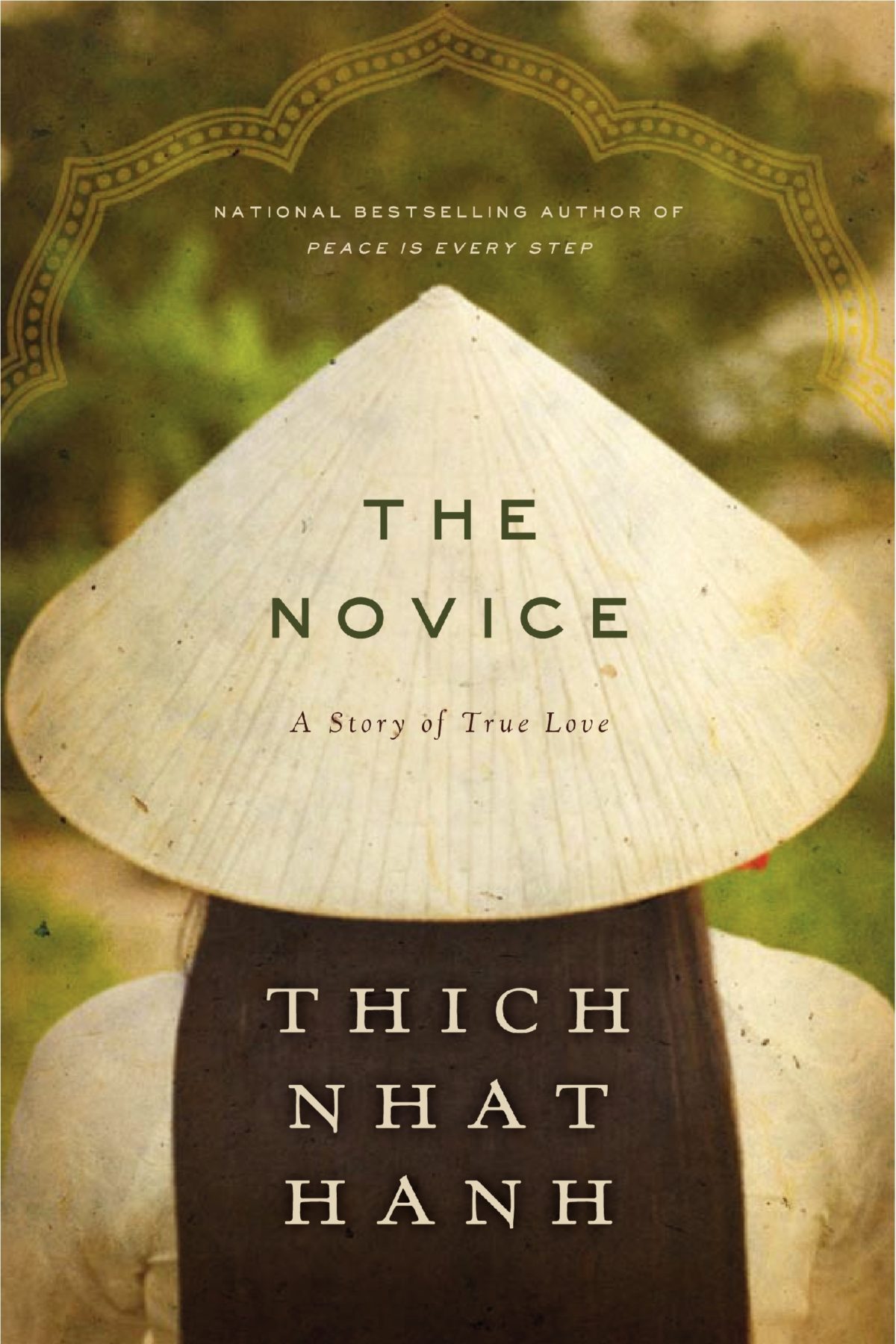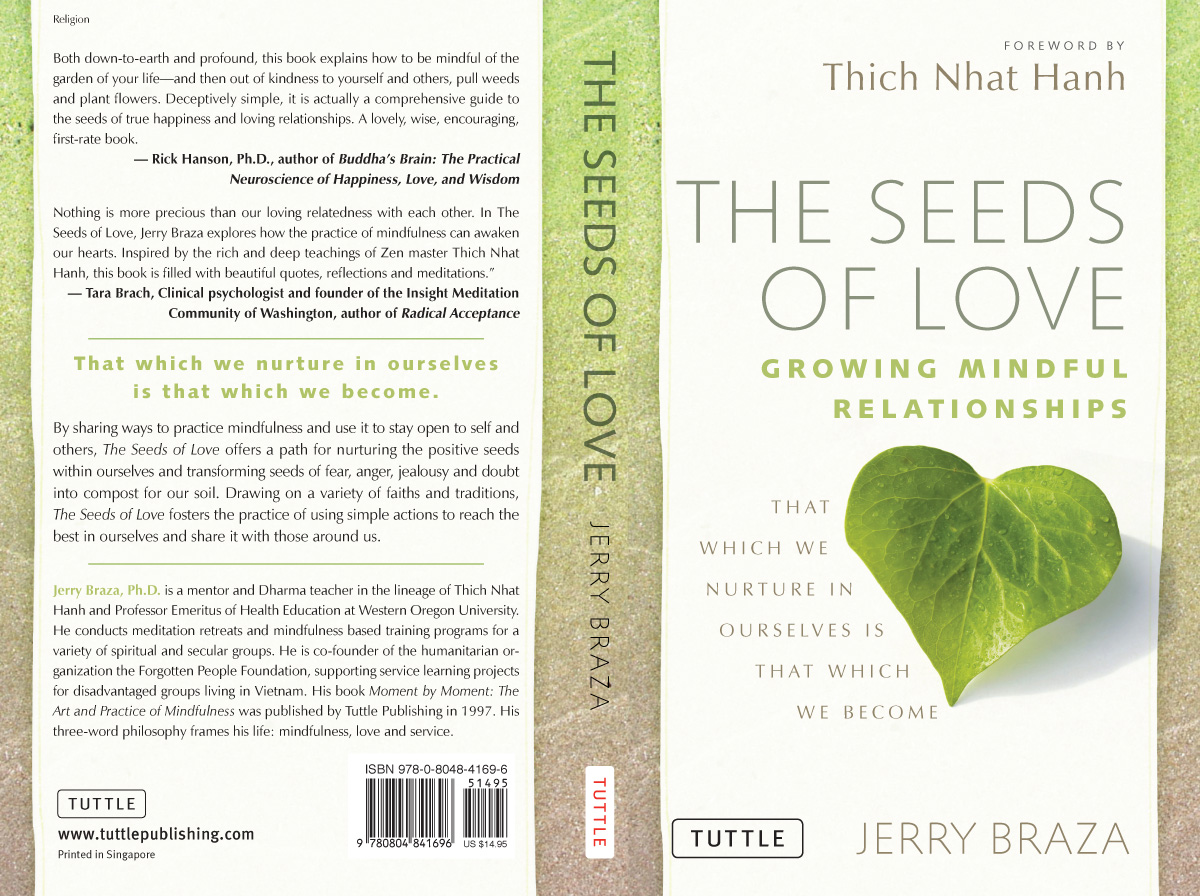
The Novice
A Story of True Love
By Thich Nhat Hanh
HarperCollins, 2011
Hardcover, 160 pages
Reviewed by Chau Yoder
Edited by Lyn Fine and Natascha Bruckner
I felt really touched by the new English version of The Novice: A Story of True Love. When I read this story of the novice Kinh Tam in English,

The Novice
A Story of True Love
By Thich Nhat Hanh
HarperCollins, 2011
Hardcover, 160 pages
Reviewed by Chau Yoder
Edited by Lyn Fine and Natascha Bruckner
I felt really touched by the new English version of The Novice: A Story of True Love. When I read this story of the novice Kinh Tam in English, and then reread the original Vietnamese version (Su Tich Quan Am Thi Kinh), I felt strongly that many readers would benefit from the tale of injustice, patience, and the four immeasurable minds of loving kindness, compassion, joy, and equanimity. Thich Nhat Hanh’s version of this ancient Vietnamese story has many deep teachings to transform our suffering.
When I was about fifteen years old, I went with my mom to the Vietnamese opera (Cai Luong) and saw many touching stories. This one penetrated deep into my subconscious, planting seeds about Buddhism, patience, and realizing the great vow to live a free life. I used to hate the character Mau, who falsely stated that Thi Kinh was the parent of her baby. Now, reading Thay’s novel, I feel more compassionate toward Mau. As I read this book, I felt my heart opening—especially toward the end, when I read Thi Kinh’s compassionate letters to her parents, teacher, husband, and Mau. Thi Kinh wrote these love letters at the time she knew she was dying, and I felt she was passing her generosity on to us. Her letter to her parents inspired me to think about my parents. They sacrificed so much for me, and at times I wonder if I was good enough for them. I created suffering for them when I decided to marry my husband Jim and live far away from them. Yet when we became engaged, they generously opened their hearts to Jim, and we all happily lived near each other when Jim and I sponsored them, my grandmother, and my siblings to come the U.S. in 1981.
I felt touched by Thi Kinh’s letter to the abbot, who had accepted Thi Kinh as his student, thinking she was a man. Thi Kinh wrote that in order to go to the pagoda to study, she had to pretend to be a man because there was no nunnery. She asked for forgiveness for the deception. She begged her teacher to build a nunnery so that young women could be students of the Buddha’s teachings. She was thinking about the future, “paying it forward” on her deathbed!
A key teaching in the novel relates to the question of how to be magnanimous without being a victim. Why do people have to be tolerant of injustice in the world? Why do we have to live in the patient way that Thi Kinh lived? Thay writes that being patient does not mean suppressing suffering. We have to be patient in order to understand with loving kindness, compassion, joy, and equanimity.
Near the end of Thay’s retelling of this ancient tale, the abbot visualizes that Thi Kinh is really a bodhisattva. Her loving kindness is not only for human beings, but for all beings—a grand aspiration. This is the ultimate goal of the true awakened person; how can we live it in our lifetime? This story offers a lot for us to think about: the meaning of equanimity, letting go, nondiscrimination, non-self, patience, and magnanimous living.
In the English edition, a chapter by Sister Chan Khong offers an interesting comparison of the life stories of Thi Kinh and Thich Nhat Hanh, who both have a grand patience and an inclusive heart. Additional chapters describe the activities of the School of Youth for Social Service (SYSS) founded by Thay in 1964, and the situation in Bat Nha (Prajna), a monastery in Vietnam that was offered to Thay in 2005 by the abbot of a temple in Lam Dong Province, but ousted by the Vietnamese authorities in 2008.
I’m thankful that Thay published The Novice in English, so that young generations in the United States will get to read it and understand their Vietnamese roots a little better. My hope is that when people read this novel, the nectar of compassion in Thi Kinh will drop into their mind, body, and spirit to help them become more compassionate, ethical, loving people who will, in turn, help us live a more harmonious life.

The Seeds of Love
Growing Mindful Relationships
By Jerry Braza
Tuttle, 2011
Soft cover, 192 pages
Reviewed by Karen Hilsberg
“As the gardener, such is the garden.”
— Hebrew Proverb
The foundation for developing mindful and healthy relation- ships begins with ourselves. Three practices—Seeing, Renewing, and Being—will support you as you become the master gardener of your life and your relationships.” This opening passage from The Seeds of Love, by Jerry Braza, reflects the accessible yet deep lessons shared by the seasoned Dharma teacher in his new book. Braza emphasizes teachings and practices that help us nurture positive seeds in ourselves and our loved ones. He writes about how to transform seeds of fear, anger, jealousy, and doubt into love, compassion, and understanding.
While many of the teachings in The Seeds of Love reflect the wisdom of the Buddha and Thich Nhat Hanh, Braza brings a unique, modern, and American perspective to his presentations. He offers the insights of an experienced lay practitioner and college professor who has practiced with a Sangha for many years. The practices explored are not only for the purpose of individual self-healing, but also for promoting healthy relationships with our families, friends, and co-practitioners. As the Buddha teaches, we inter-are with each other, so healing within and without cannot be separated.
This book is both simply presented and dense in content. Braza includes beautiful poetry and illustrations that make the book an excellent practice companion. Furthermore, the teachings are accessible to people of all faiths, and Braza incorporates the lessons of many wisdom traditions, including Buddhism, Christianity, and Judaism. Appropriate for beginners and experienced practitioners alike, this is a wonderful continuation of the author’s first book, Moment by Moment: The Art and Practice of Mindfulness.
As a gardener, I find the book’s gardening metaphors and themes beautiful. They bring to mind the fact that one translation of an ancient word for “one who meditates or practices mindfulness” is “a cultivator.” The Seeds of Love would be a great book for Sanghas or book groups to read together and use as a basis for meaningful sharing and discussion.

Walking the Tiger’s Path
A Soldier’s Spiritual Journey in Iraq
By Paul M. Kendel
Tendril Press, 2011
Soft cover, 247 pages
Reviewed by Judith Toy, True Door of Peace
Until reading Sergeant Kendel’s book, I’d only heard news accounts of the war in Iraq. Although my two nephews have each done two tours in Iraq, they don’t talk about their experiences. Kendel describes the precise type of hell realm this war has been. The “enemy” is both everywhere and nowhere, and compassion is considered a weakness. In the course of serving with the Georgia National Guard, Kendel became a student of the Shambhala Buddhist teachings. He learned that the mind of a tiger, according to Sakyong Mipham, is a “mind of discernment,” allowing us to “stop and think and make a decision based on wisdom and compassion, rather than on hate and fear.”
With story after hair-raising story, Kendel outlines his gradual battlefield enlightenment through correspondence with Buddhist teachers, and through reading Pema Chodron’s Awakening Loving Kindness while on patrol. He came within a fraction of an inch of blowing away a father and his little girl, but made split-second eye contact with the child. Instead of seeing the enemy, he “saw something positive. I saw hope in that little girl’s eyes. Hope…even when the world around her seemed to be in total chaos.”
When Kendel came home, his wife was having an affair and not only ended their marriage, but changed his close relationship with his two sons. And then his mother died. These events, along with haunting incidents in Iraq, constituted for Kendel both a crisis and an opportunity.
His saving grace was the Shambhala practice, along with Margot Neuman, a senior student who reached out and gave Kendel a peaceful place to take refuge. His subsequent visits to the Shambhala Mountain Center, and meeting Pema Cho- dron and Sakyong Mipham as well as Shambhala President Richard Roech, cemented Kendel’s inner peace and gave him a Sangha. The Shambhala warrior, he learned, does not create war at all. The tiger sees with clarity how to act.


